

Industrial companies face multiple challenges as they strive to increase market share and profits and gain competitive advantage. Cost pressures, increasing global competition, dynamic customer requirements, cybersecurity threats, proliferation of regulations and standards, and skills shortages are just some of the issues that companies need to navigate. And sectors running hazardous and energy-intensive processes, like oil refining, chemicals, and metals must pay particular attention to operating safely and meeting sustainability expectations.
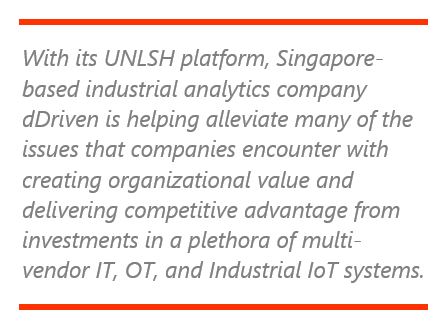
dDriven, a Singapore-based industrial software start-up company recently briefed ARC Advisory Group on why so many companies struggle to realize the expected returns and improvements from their various technology investments. As we learned, dDriven’s UNLSH platform can help alleviate many of the issues that companies encounter creating organizational value and delivering competitive advantage from what is increasingly a plethora of multi-vendor IT, OT, and Industrial IoT systems.
“Operational Excellence,” a rational process for gaining competitive advantage and achieving world-class business performance, provides the foundation for a company’s standard conduct of operations, compliance assurance, workforce competency, and asset performance management. However, based on the results of a recent ARC survey of more than 250 asset owners that examined the relative maturity of operational excellence initiatives, ARC learned that the industry is still at low maturity when it comes to operational excellence. The survey looked at maturity across multiple indices including data sharing culture, knowledge transfer, and decision making.
For instance, in knowledge transfer, most companies are at Level 1 (Basic), where unwritten knowledge dominates and procedures are not widely used. While some companies (Leaders) are at Level 2 (Optimized), where best practices and explicit knowledge are digitized, none are at Level 3 (Transformed), where knowledge is integrated into IT tools to drive informed action.
In the decision making index of the maturity assessment, the survey reveals most companies also at Level 1 maturity, where the time required to gather information often leads to delays in making decisions. The Leaders at Level 2 do at least have data readily available to support human decisions. No companies exhibited Level 3 maturity of largely automated decisions.
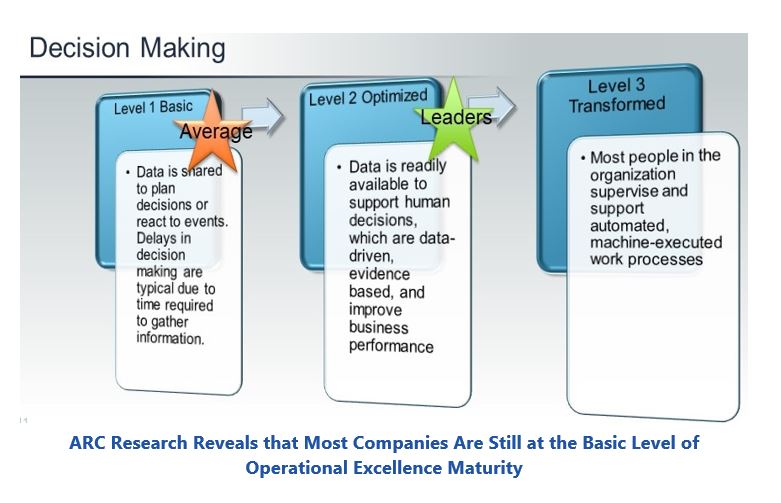
What is apparent from the survey, and also confirmed by other ARC interactions with industrial end users, is that companies rarely lack IT tools or automation systems. Rather, while often effective point solutions, the multiple data sources they have on hand are not conducive to quick decision making. Since people must spend inordinate amounts of time searching for and combining information, organizational performance suffers.
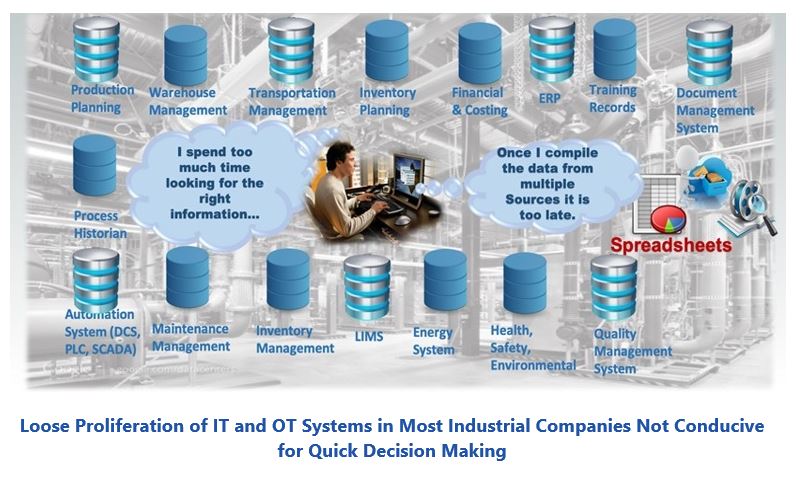
Hence, what is needed is a more intelligent approach that provides contextual aggregation of information, promotes knowledge transfer across different departments, and enables the organization to improve its operational excellence maturity level.
While advanced analytics can yield immense value when dealing with multiple IT/OT/Industrial IoT data sources, most analytics and digital transformation initiatives tend to create a layer of “disparate analytics” on already disparate data, resulting in complication rather than clarity. In increasingly complex manufacturing environments, cross-functional contextualization is key to understanding a chain of events and its impact across different business functions.
dDriven was founded in Singapore 2016 by a group of experienced industry professionals who recognized the data silo problem. The company’s current leadership comprises individuals with decades of combined service at technology suppliers such as Siemens, GE, TCS, and Honeywell.
The company’s UNLSH software platform connects disparate sources of plant data; analyzes and contextualizes those data; and then serves up the results to built-in or external reporting and visualization (dashboard) tools or third-party applications.
A key feature of UNLSH is its universal data ingestion ability to connect to multiple vendor systems and handle different IT, OT, and IoT data types. For example, it connects to ERP systems like SAP, Oracle, and Microsoft Dynamics; OT systems like Siemens and Schneider Electric PLCs and DCSs; and IoT-connected sensors for temperature, vibration, and other variables. It can also extract text from Word or PDF files used for manual documentation of maintenance schedules and records, etc.
Once the data is in the system, the customer can use configuration screens to perform calculations, create hierarchies, and relate data from different sources, e.g. machine vibration data with maintenance work orders to ascertain the effectiveness of machine maintenance activities. The dataset is then available for dashboarding and reporting.
The key “no-code” feature of UNLSH helps eliminate the complexity users normally encounter when setting up IT tools. This reduces investment risk and enables its use by domain experts (rather than just IT experts) to significantly reduce time-to-value. According to the company, a digital transformation that would normally take two to three years to complete, can now be completed in as little as three months.
dDriven uses the term Operations Digital Twin (ODT) to describe the core of the platform, where codified domain expertise and analytics combine with operations data to provide real-time representation of physical entities like process equipment and materials, as well as non-physical entities like work orders and labor costs.
The UNLSH Operations Digital Twin adds the crucial cross-functional contextualization to bring visibility into the impacts of an event, such as a breakdown alert, across the entire operations value chain: production, maintenance, supply chain, logistics, finance, etc.
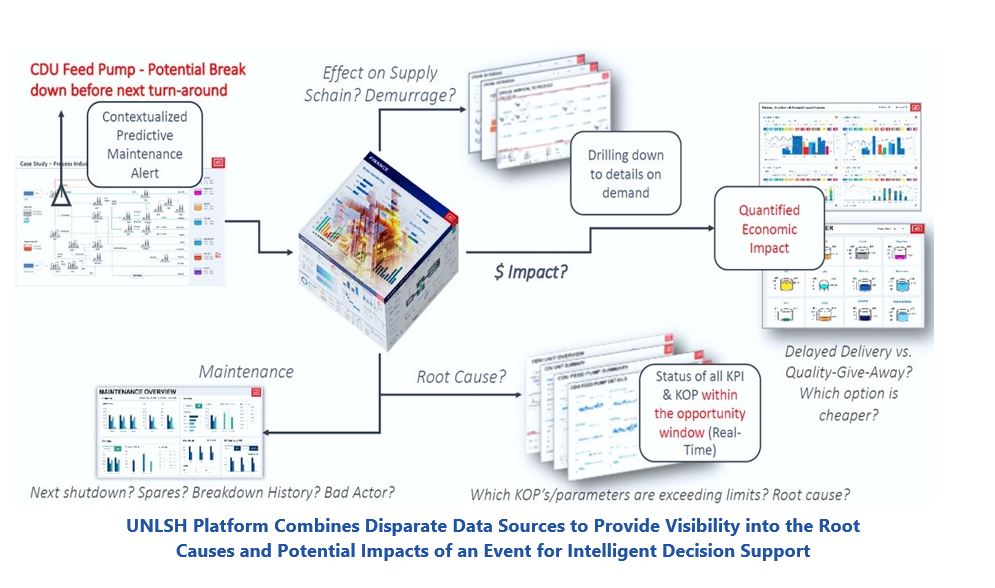
dDriven’s UNLSH platform is especially relevant for industrial facilities running complex operations and replete with IT, and OT and Industrial IoT systems generating high volumes of data. While UNLSH is applicable across all industries, dDriven is seeing initial interest from and success in the oil & gas industry, in both upstream production and in downstream refining and petrochemicals and has already implemented UNLSH in several facilities.
For the naphtha cracking complex of a large petrochemical facility in north Asia running 10 IT systems from multiple vendors and operating with over 140,000 OT tags, it faced the familiar problem of poor operational efficiency resulting from disconnected operations and exhibited in the form of frequent downtime, excessive inventory, high energy input costs, and process safety issues.
With UNLSH, the disparate IT and OT data streams are ingested, analyzed, contextualized, and visualized (with over 100 selectable dashboard screens) so users can rapidly act on the information. According to the company, the enhanced real-time operations visibility, exception alerts, and timely anomaly detection are helping move this naphtha cracking complex to new levels of operational excellence. And with every 1 percent improvement in operations at the plant translating to an estimated $50-75 million in financial savings, the return on investment is clear and apparent for the owner-operator.
In another downstream implementation, a large oil refinery in Southeast Asia was looking to slash the setup time and 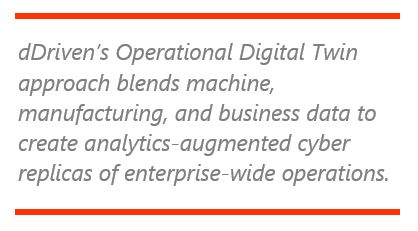
Using UNLSH, an AI deep learning model operates on historical data including crude oil type, lab samples, and process parameters and pro-duces as output optimal set up parameters for each crude oil type change. As ARC learned, the new set up time of four to six hours pro-vides a direct cost reduction of up to $500,000 a year and reduces the risks of incorrect set ups and disrupted operations. UNLSH’s Operational Digital Twin of the crude distillation unit also facilitates developments of other AI applications for improving CDU performance.
The challenges that industrial companies face in remaining competitive in an increasingly volatile world merit a technological response. However, the experience of many companies is that while IT and OT systems provide the expected functional benefits, their complexity and data-siloed nature prevent wider organizational benefits that could translate to competitive advantage.
In addition, implementing Industrial IoT, advanced analytics, and other advanced technologies can further increase the complexity. Indeed, many companies report disappointing results from digital transformation initiatives.
With UNLSH, dDriven can help companies take the bigger picture approach and use data to realize intelligent operations, where the broader implications of a plant event (such as an impending equipment failure) on business-impacting variables (such as production quality and lead time) is rapidly ascertained and appropriate decisions accelerated to prevent business loss and maximize available opportunities.
Significantly, dDriven’s Operational Digital Twin approach cohesively blends machine, manufacturing, and business data to create analytics-augmented cyber replicas of enterprise-wide operations. The cyber replicas (“Operations Digital Twins”) empower connected industry use cases across multiple dimensions including planning & scheduling, asset operations, supply chain, health, safety & environment, maintenance & reliability, and production operations.
In the midst of the COVID-19 crisis and consequent capital-constrained environment, industrial companies can realize significant financial benefits by focusing on improving existing operations. dDriven’s UNLSH platform is an appropriate tool to consider as they look to maximize returns from existing technology investments, identify areas of operational inefficiencies, and achieve operational excellence.
ARC Advisory Group clients can view the complete report at ARC Client Portal
If you would like to buy this report or obtain information about how to become a client, please Contact Us
Keywords: dDriven, UNLSH, Digital Transformation, Operational Excellence, Intelligent Operations, Oil & Gas, Downstream, Operations Digital Twin, ARC Advisory Group.

